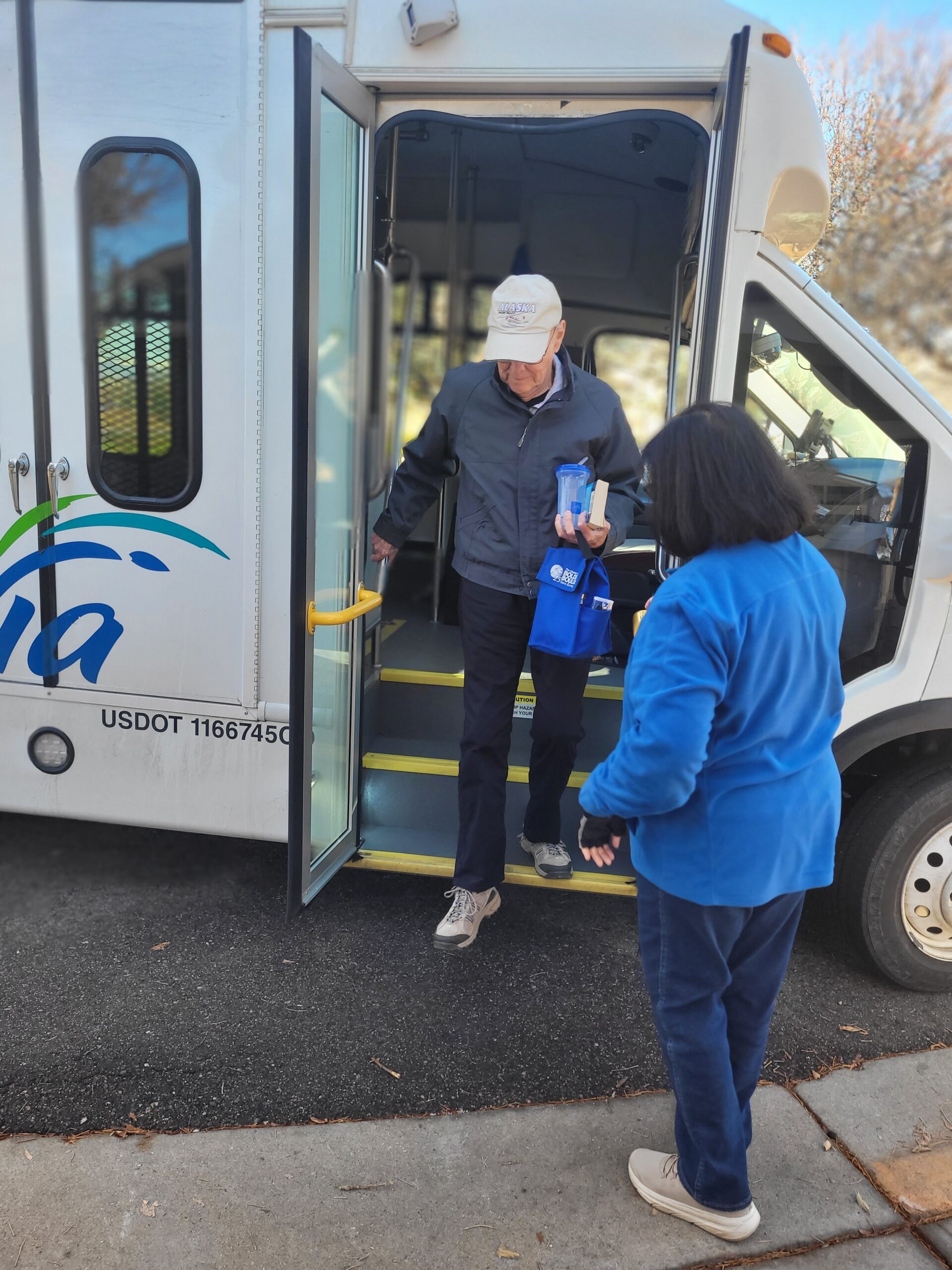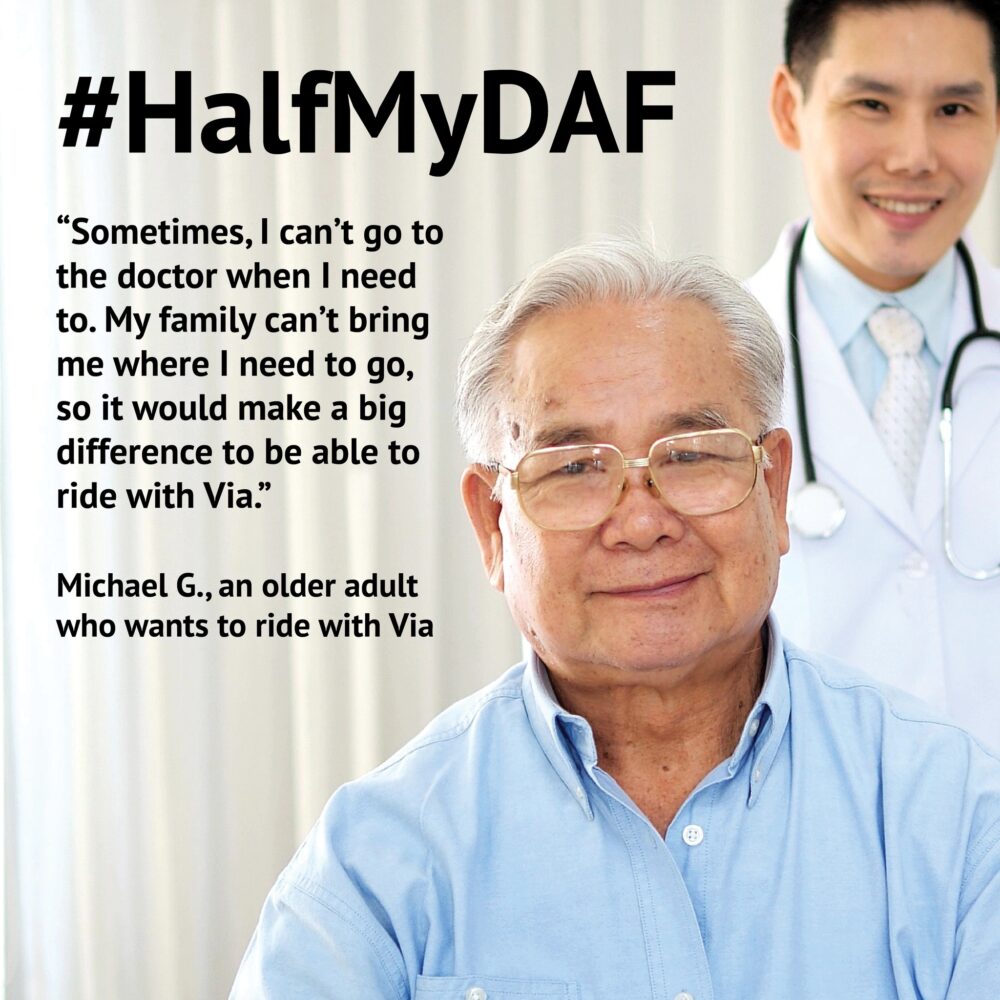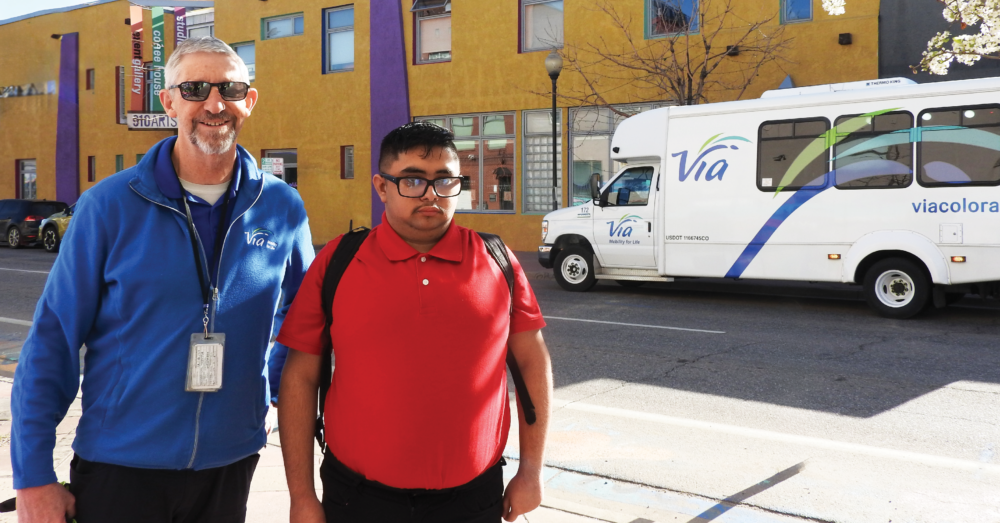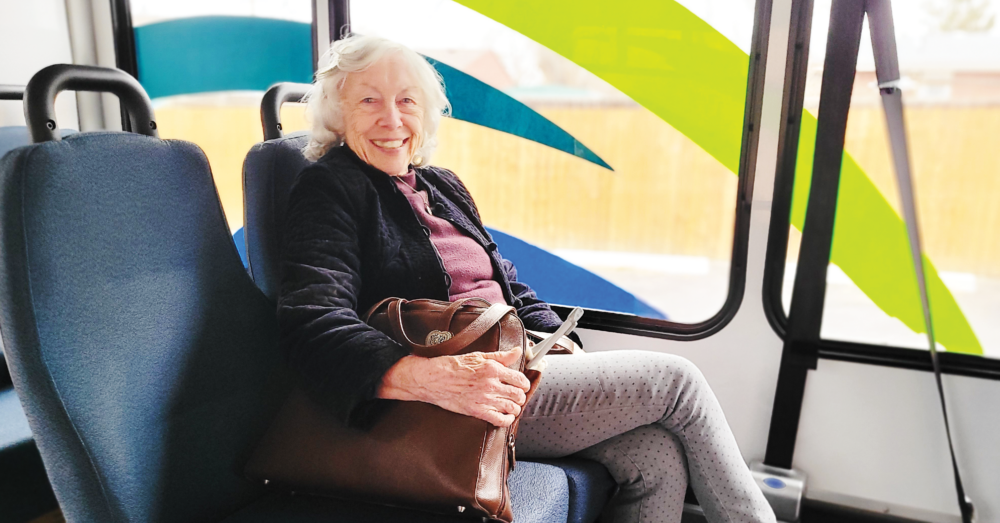
Via Paratransit driver Mary helps Ray off the bus.
Via Mobility Services, a leading nonprofit provider of affordable, accessible transportation, faces unprecedented demand for its services, delivered by specially trained drivers, to help people with limited mobility enhance their independence and self-sufficiency. Despite serving thousands of Colorado residents each year, Via estimates that at least an additional 1,000 individuals need accessible transportation, representing older adults missing a crucial medical appointment, people with disabilities not having enough groceries at home, or individuals remaining isolated at home instead of connecting with other people over social activities. Most people waiting to ride with Via reside in Denver County, followed by Jefferson, Arapahoe, Adams, and Boulder counties.
According to the Pew Research Center, the U.S. population aged 65 and over has grown rapidly over the last decade. In 2020, about 1 in 6 people in the United States were age 65 and over, but in 1920, this proportion was less than 1 in 20. This growth in the older population is driven mainly by the aging of the baby boomer generation, born between 1946 and 1964. By 2030, all baby boomers will be aged 65 and over. Not only has the older population risen historically, but it will continue to grow through 2060. As this population growth continues, “the cost of our programs for seniors will soon exceed half of the federal budget.”
The growing aging population has increased the need for Via’s door-
Hear from People Waiting for Accessible Transportation

Donors, including those who give from a Donor Advised Fund (DAF), help Via serve people who need accessible transportation.
- “My husband, Albert, is a retired police officer. He is 87 years old and has had multiple surgeries; recently, his right leg was amputated above the knee. He uses a wheelchair, and I can’t bring him in my car. Getting where we need to go has been challenging, like rehab facilities. I broke my arm, and I’ve had hip surgeries. We need accessible transportation to get where we need to go.” – Marie Sandoval
- “My brother, Michael, recently passed. My sister and brother usually drove him to appointments; It was challenging because they both worked. I flew in from out of state multiple times to help my siblings and ensure Michael received the care he needed. We made it work to get him where he needed to go, but getting even a few rides a month would have greatly reduced the pressure on him and our family.” – Dawn I.
- “My dad is 90 years old and lives in a retirement community. He relies on me, my husband, and my sister for rides to dialysis three days a week. My dad feels guilty about taking up so much of our time. Transportation with Via would give him the independence he needs and be an amazing blessing for our family.” – Karen
What It Will Take to Meet the Growing Demand for Accessible Transportation in Colorado?
Via directs the majority of its funding to direct services for our neighbors with limited mobility rather than on administration. Via’s efficient program-to-overhead ratio is 82%.

Via Rider Edward travels to art classes with the support of a trained Via Paratransit driver.
Due to surging inflation and a nationwide driver and mechanic shortage, operating costs have increased significantly since 2020. Revenues from grants and other sources have remained flat or decreased. Via does not charge riders the total service cost. Some rides are free for riders and paid for by grants or contracts. Some riders in some service areas are charged a fare and are capped at just $12 for longer trips.
The average actual cost per accessible trip is $100, including the cost of a trained driver, insurance, fuel, and vehicle maintenance costs. Each Via Rider takes an average of 30 trips annually. For example, to accommodate another 1,000 Via Riders in 2024, an additional $3,000,000 is required to expand services. Demand and the need for increased funding are expected to continue rising through 2060.
Via has made progress toward financial stability by adopting new route management software and purchasing a facility in Denver after leasing for over 20 years. These measures have improved operational efficiency and reduced costs.
Donations, including stock gifts and bequests from caring donors’ wills, can make a big difference in helping meet the needs of our older and disabled neighbors. Via also relies on grants and income-generating contracts as a social enterprise to assist its accessible transportation program and actively pursues new contracts to bridge this gap.
Your support is crucial! Donations can help Via meet the growing demand and continue our commitment to Mobility for Life.

Suzy rides with Via to the Seniors Resource Center and attends their Adult Day Center.